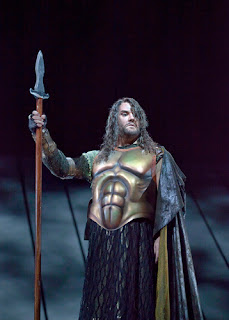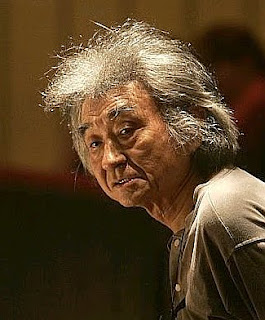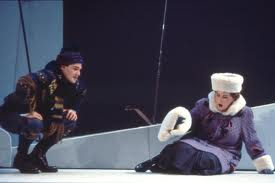The Metropolitan Opera's first revival of Bartlett Sher's 2009 production of Les Contes d'Hoffmann was a showcase for new talent. Under the baton of newcomer Patrick Fournillier, the performance was led with an authentic French musical style that was absent from last season's run.
 |
| Spalanzani's Carnival in Act I of Hoffmann. Photo © 2010 The Metropolitan Opera |
Tenor Giuseppe Filianoti anchored a strong cast as the opera's titular protagonist. He sang with a bright, polished tone and showed a willingness to go after the big moments, reaching for the optional high notes that are rarely heard in this modern era of cautious singing. His "Ballad of Kleinzach" was a highlight, performed with the proper rubato that is needed to make this fantastical opera take flight. Best of all, he had the stamina to lead "Hélas, mon coeur," the huge ensemble that brings the Giulietta act to its climax, and enough left in the tank to reprise "Kleinzach" in the opera's Epilogue.
Ildar Abdrazakov continues to recover from the disaster that was last year's Attila. He sang the Four Villains with a dark, stout-ish voice and a grim joy in Hoffmann's discomfort. From his evil "heh heh heh" laugh to a lush, glittering rendition of "Scintille, diamant," this was a strong performance. (He even did a good job of clinking the vials as Dr. Miracle, a low point in this opera.) In this version of the story, the Four Baddies are aided and abetted by the Muse, who conspires to end Hoffmann's doomed romances and get him back to his writing table. Kate Lindsey reprised her extraordinary portrayal from last season, and almost stole the show.
Hoffmann's chief attraction is the Three Lovers, the tryptich of Olympia, Antonia, and Giulietta. Their presence serves as a triple foil for Hoffmann's obsessions. In this staging, the three heroines are played by three different singers. Antonia was the most successful, as Russian soprano Hibla Gerzmava soared through the part in fine style. She sang softly and beautifully in the character's opening ballade, and then soared to dizzy heights in the final trio, before expiring with a lovely (and added) trill. This was an impressive debut, and her star will be rising after this performance.
Anna Christy was less successful as Olympia. She sang "Les oiseaux" with caution, and fell short of the piping high Fs required of the singing doll. Her comic acting was not up to the standard established last season by Kathleen Kim. Mezzo Enkelejda Shkosa did not make much of a vocal impression as Giulietta (the part is too short) but blended beautifully with Kate Lindsey for a lovely performance of the Barcarolle.










